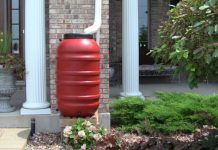By Michael Leach
The cost of drug rehab is a significant barrier for many. The price of drug rehab has always been an ongoing issue surrounding substance use and addiction recovery.
According to the California Healthcare Foundation, in 2019, 88% of substance use disorder treatment facilities in the state were privately owned. Local, county and government-operated facilities accounted for 8% of treatment options.
The need for substance use treatment is steadily increasing. More individuals are struggling with addiction and mental health issues, and homelessness. Drug overdose is a public health crisis, and the pandemic certainly worsened the situation.
The average person in California who pays for drug rehab uses their private healthcare plans or Medicare. However, despite new health plan standards and parity laws, Medicare and private payers are spending considerably less on substance use treatment than they did on overall health care services.
It is no secret that drug rehab costs are one of many barriers. What Happens When Someone Tries to Get Help for their Substance Use Disorder?
Initially, the first step for most people is calling drug rehab centers. It has been shown that when someone can find high-quality medical care, it makes a huge difference in long-term recovery. Unfortunately, there have been problems with for-profit drug rehab programs charging inflated fees, using misleading sales practices, and not necessarily evaluating individual needs. Families calling drug rehab centers speak to sales professionals using aggressive sales techniques to get payments upfront.
“Much has changed, and more accountabilities have been placed on private drug rehab centers and their intake personnel,” said Marcel Gemme of Addicted.org. “We have seen more focus on helping the person or family calling find rehabilitation that meets their individual needs through proper assessment and evaluation.”
Despite all this, the cost barrier within the private sector is still significant. Private health plans may cover a percentage of the cost, yet there are still substantial out-of-pocket costs. A program may offer a payment plan, financial assistance, or financing, but it is a barrier for many.
Counties in California provide most substance use disorder treatment services to Californians who are enrolled in Medi-Cal or uninsured. Other options include programs that are funded through substance abuse prevention and treatment block grants.
The services provided include outpatient and intensive outpatient, perinatal residential care, residential care, screening, and referrals. Yet, availability is scarce, and most clients receive outpatient care with little follow-up.
Most experts agree that the healthcare system should include more services, which are covered by insurance, to prevent and treat substance use disorders. At one time, substance use was only seen as a social or criminal problem, which meant it was not the healthcare system’s responsibility. Yet, much has changed, and more services are covered, but is it enough, and is it the right option for the individual?
Evidence has shown that the separation of treating addiction and mental health issues from mainstream healthcare has created significant obstacles to successful care coordination.
Changes are still underway, yet policymakers remain focused on harm reduction, which only addresses social harms and a small fraction of the problem. Providing safe injection sites for addicts does not mean rehabilitation from addiction.
Medicare and private pay insurance will likely cover more medication-assisted treatment with buprenorphine or methadone than a long-term drug rehab program, frustrating for anyone who wants to rehabilitate from drug addiction.
It is improving with the changes in Medicare and private pay providers covering more options. Yet, cost, like with anything, remains a significant barrier. Most individuals addicted to drugs or alcohol will use cost as a big reason to not commit to treatment, despite spending hundreds or thousands of dollars on drugs every week or month. Families also struggle with similar frustration.
It is not uncommon for a family to spend $15,000 to $20,000 on rehab just for their loved one to finish the program and relapse immediately—which comes back to ensuring the drug rehab center is geared toward the client’s individual needs and not just a fancy sales pitch.
Comparatively, it is much better than it was even five years ago. The number of services has increased, yet demand increased after the pandemic. It is still a battle for most families. Still, more options are there, and it just takes some looking and determination to find the best one with the help of proper evaluation.
Michael Leach has spent most of his career as a health care professional specializing in Substance Use Disorder and addiction recovery. He is a Certified Clinical Medical Assistant.














